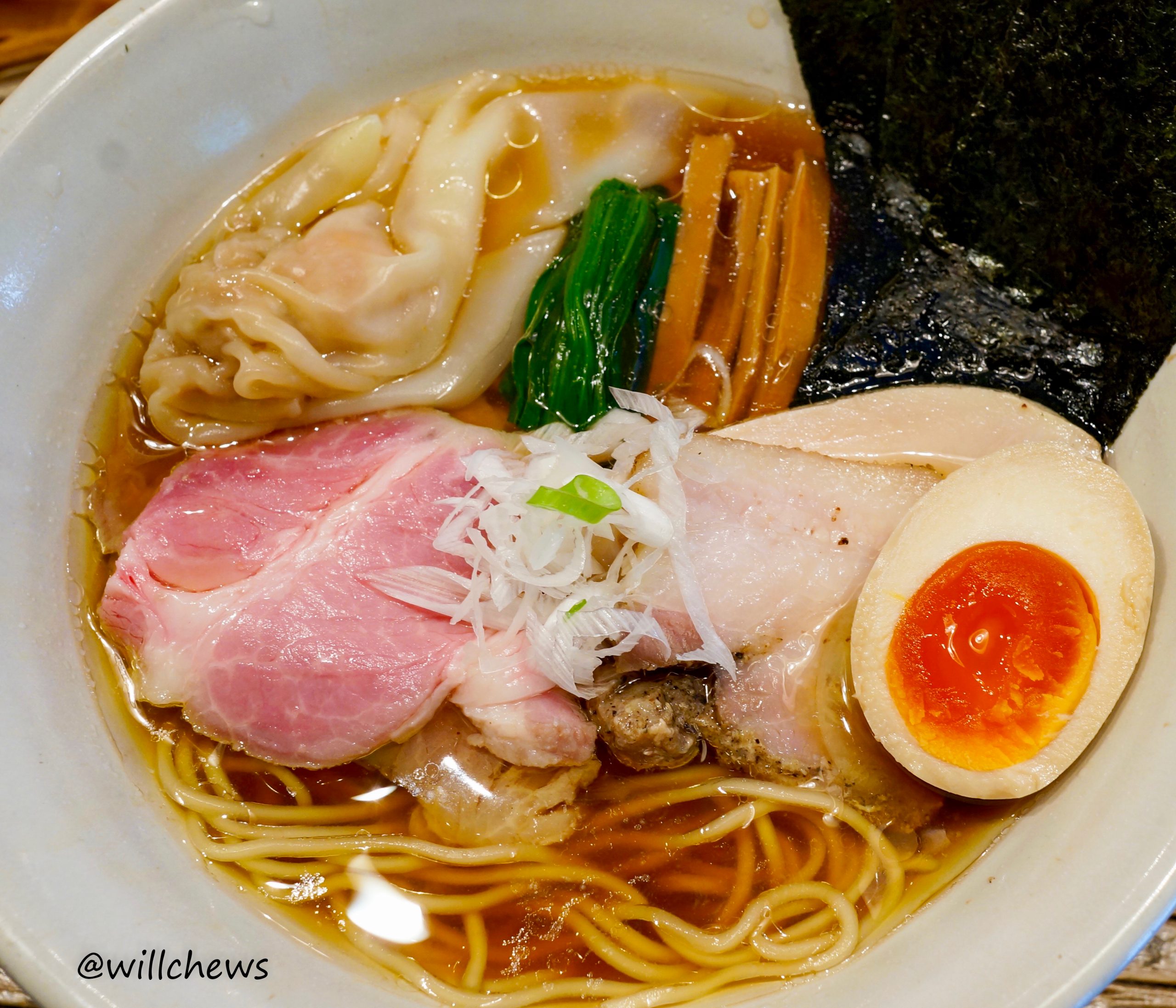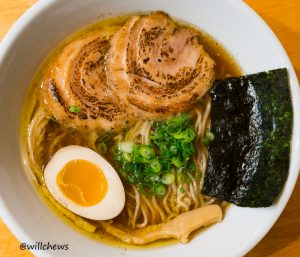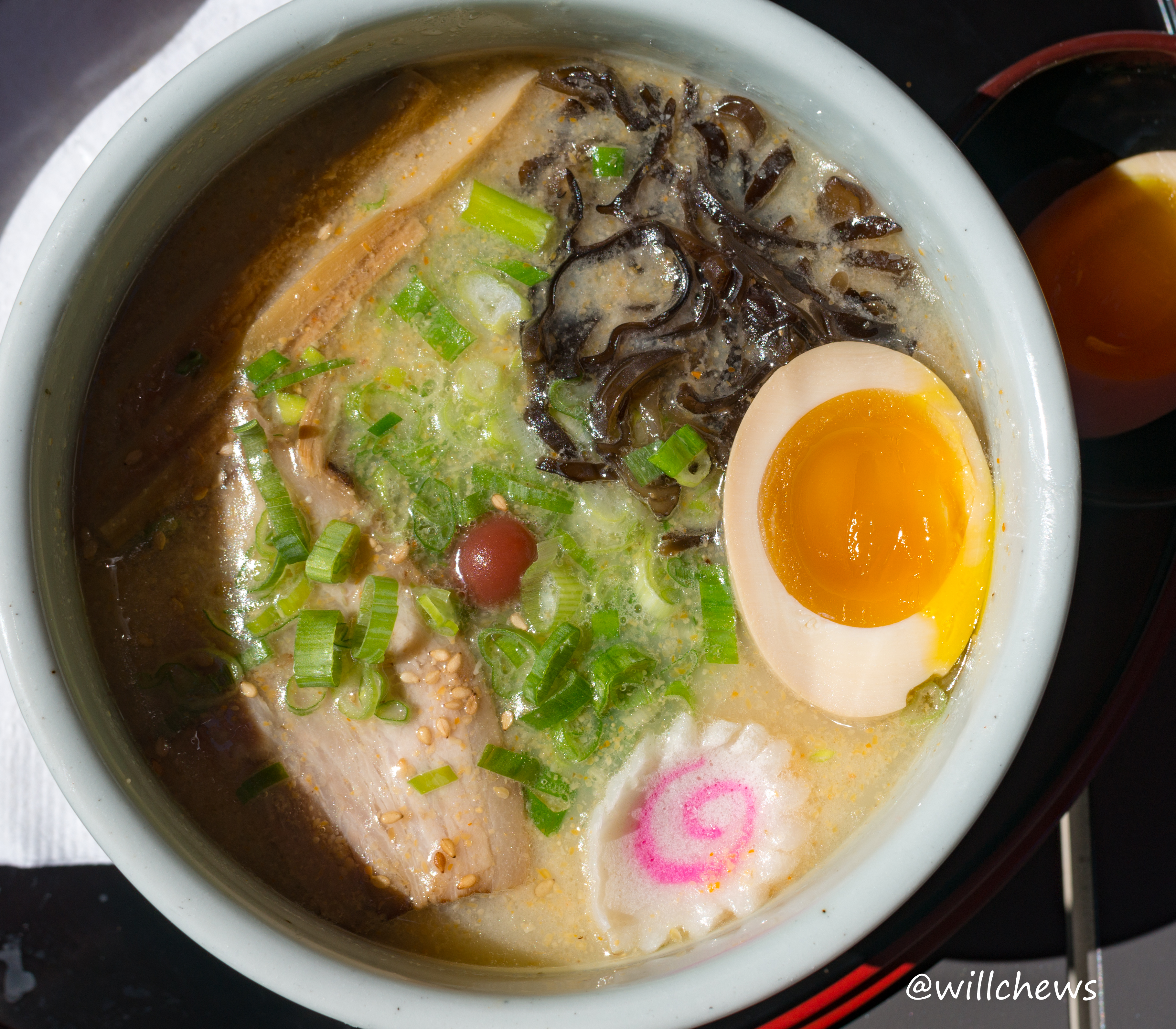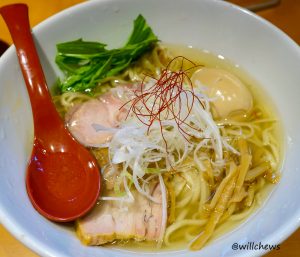Muginae opened in April 2016 and rapidly became one of the most highly-ranked ramen shops in Tokyo–winning a Michelin Bib Gourmand mention and ranking #4 and #8 on Ramen DB’s respective niboshi and shoyu rankings–despite being located in Omori, at the very far borders of Tokyo’s Shinagawa ward, far away from the ramen hubs in Shinjuku and Kita wards. Owned and run by Fukaya Akihiro and his wife, it’s part of the push by many ramen shops to showcase their specially-procured ingredients and lack of chemical additives in their ramen. According Brian McDuckston of Ramen Adventures and the Japan Times, Muginae’s flagship chicken-shoyu ramen uses free range chickens from Yamagata and tare from craft shoyu from Nagano and Hyogo (the prefecture for the city of Kobe, to the west of Osaka) that Fukaya mixes personally. Noodles are handmade in house daily.
Lines are very long at Muginae, even by Tokyo ramen standards; a visit back in October 2016 for a weekend lunch involved a 90-minute wait, though the shop has switched over to a seiriken system since. Once inside, one is rewarded with terrific bowl of ramen, with the broth and chashu as particular standouts. The shoyu broth has excellent deep flavors, infused with chicken notes coming from the droplets of chicken oil on top of the broth. My tokusei bowl featured three different kinds of chashu: roasted pork shoulder, pork belly, and sous vided chicken breast. The former and the latter were the most impressive; I never quite know how Japanese ramen shops are able to pull off such pinkishly-roasted shoulder, nor why more shops aren’t willing to sous vide their chicken breast chashu. In anycase, both were quite good and visitors should consider ordering extra chashu if possible. Finally, as I’m a big fan of menma, their finely-julienned menma were really terrific–firm, chewy, and well-pickled–and were definitely worth the extra charge.
However, I found the noodles to be only adequate, with no distinguishing alkaline or textural notes. While many shops may be shifting to making noodles with lower levels of kansui, I personally think there should till be enough in there to provide some snap with each bite. This speaks to a broader observation I have about in-house noodles: while many shops brag about them, a great many of them don’t quite live up to the hullabaloo. The “made in-house” label is more valuable for PR than any real verdict on its quality. Another component that I was unmoved by was the shrimp wonton included in the tokusei order. I thought it was fine but nothing special; again, some ramen shops plop wontons into ramen because it’s something that can be done, but I rarely think they’re good enough to warrant inclusion. I’d much rather have another slice of chashu.
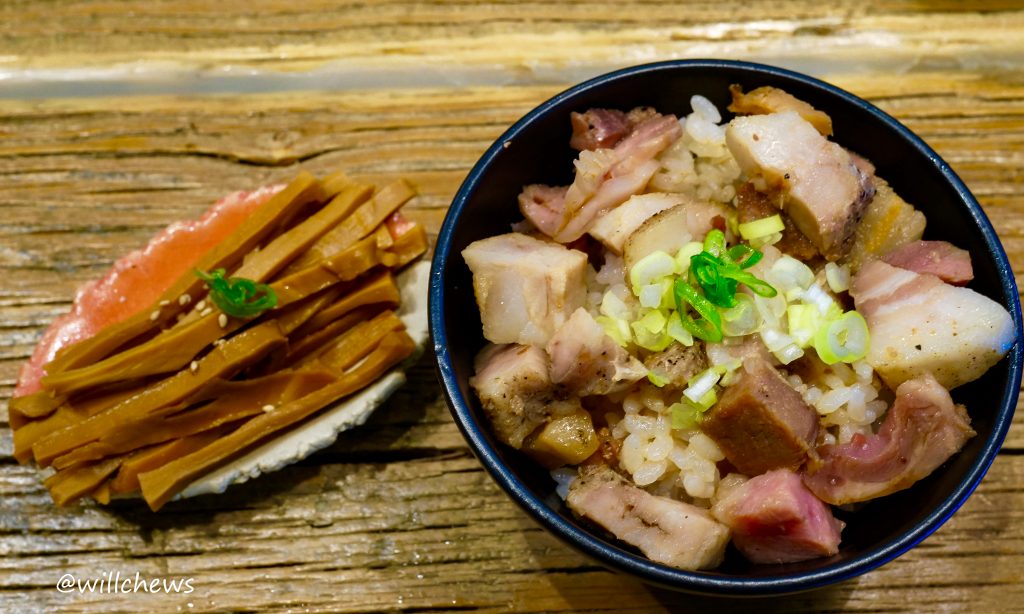
In addition, as I waited for 90 minutes and thought I deserved a treat for all my hard work standing in line, I also ordered a lunchtime chashu don that appeared to be made from chopped up pork belly and shoulder. It was good, but it didn’t quite rise up to the heights of the chashu in the bowl. But at only 200 yen, it’s not an extravagance.
So is Muginae worth the wait? Certainly not for the 90 minute wait when I visited, given the many other excellent renditions of chicken-shoyu in Tokyo. However, since my visit, Muginae has instituted a seiriken system for lunch, at 10:30 and 12:00 and is limited to about 100 bowls a day. It’s also added new variations to the menu, such as using black-haired wagyu chashu in their tokusei bowls (Muginae calls such bowls jou, 上 “up,” which is a naming convention used more for rice-based meals), as part of the ever-expanding creative arms race between Tokyo’s ramen shops. A first visit (or another visit on my part) is probably warranted, but I fear that the seiriken system would put me off from making it a part of my regular rotation.
Q Factor: 90 minutes (Weekend Lunch)
Sense: ’50s and ’60s Doo-Wop playing in the background
Prices: Special Shoyu Ramen (¥970) Menma (¥100) Lunchtime Small Chashu Rice (¥200)
Homemade Ramen 麦苗 (Homemade Ramen Muginae)
〒140-0013 東京都品川区南大井6-11-10
Omori-Kaigan Station, Omori Station (Keikyu Main Line; JR Keihin-Tohoku Line)
